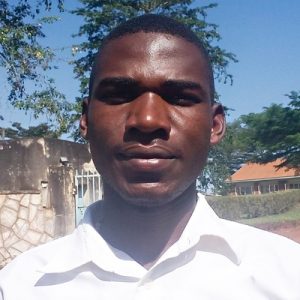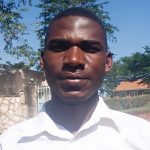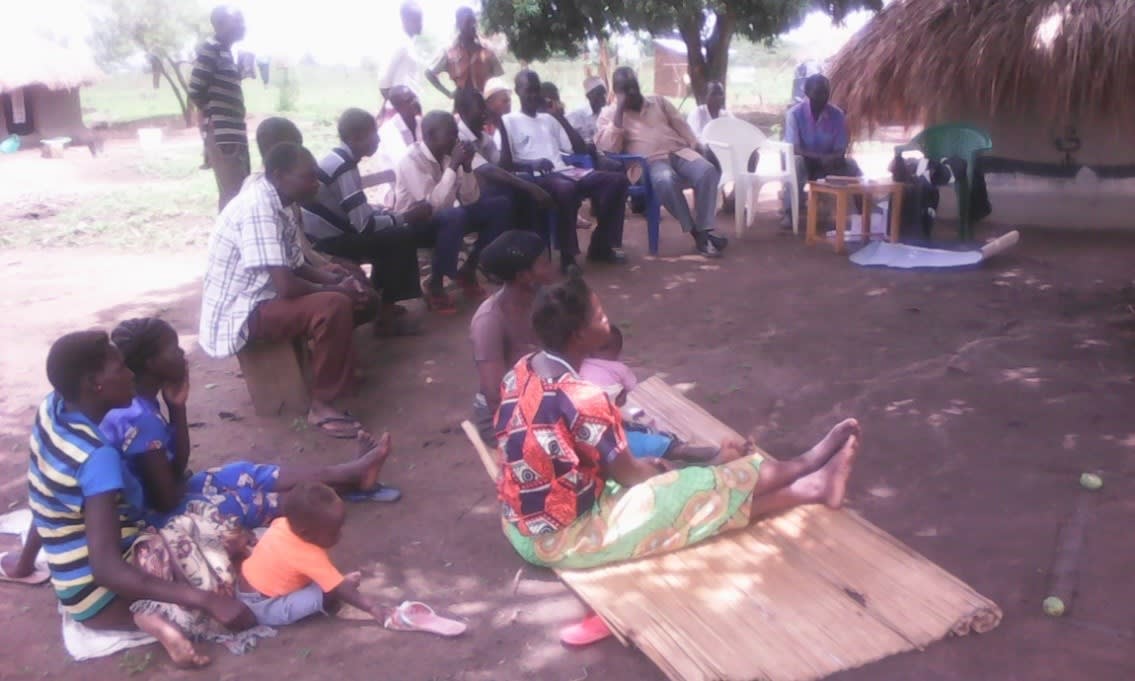This project will now be implemented in Karagalya Kawanga Community because of its people's great need for clean water. This project was previously planned for Nyakarongo II Community, but they already had a water well in working condition. Instead of implementing a full project, we used funds from The Water Promise to make the needed repairs.
Getting to Karagalywa Kawanga Village for the first time was difficult. Most roads are surrounded by swamps which makes them extremely muddy.
There is no clean water source for the 190 people living here. They get water for drinking, cooking, and cleaning from the swamp. Tons of frogs live in this swamp, and the water itself is a creamy, yellowish color. People constantly contend with waterborne diseases like typhoid and cholera, which are the leading causes of death in the village.
Irene is a 66-year-old mother of seven children, with only Nyandera Beatrice aged 20 years, Kasisaki William aged 12, and Katusabe Francis aged 16 the surviving children. Since Irene has outlived some of her own children, she now has custody of grandchildren.
Irene owns half an acre of land where she produces maize for home consumption and sells the surplus. She also rears some pigs which she sells to the village butchery for extra income.
Irene told us that she had the unfortunate experience of losing two children, Nyamakwa Peter at 2 years to malaria and Kyaligonza at 5 years to diarrhea. So when the program was being rolled out in her community during the first meeting, Irene shared her story to illustrate how poor sanitation and dirty water had negatively impacted her life.
"Losing my child to diarrhea was the most painful thing," she said.
"It opened my mind to the importance of hygiene and sanitation in the entire household. It is because of this that I am happy to hear that such programs are coming to our village."
Most people here farm maize to sell as a cash crop, raising large families with six to seven children who help around the house and at the farm. The farmers have two major planting seasons each year with the first rains running from April to June and then again between August and October. During the rainy season the bulk of the population will go their fields at 6am and break off at midday for lunch and return to the farms from 4pm to 7pm.
The people are also involved in quarrying and mining sand for construction.
The community already works together when it comes to farming. These groups are bound by friendship and the mutual understanding that they will each have to provide support for another one’s garden over the course of the year. They till each other’s gardens one after another following the crop cycle (planting, weeding, spraying, harvesting).
What we can do:
Training
Training’s main objectives are the use of latrines and observing proper hygiene practices, since these goals are inherently connected to the provision of clean water. Open defecation, water storage in unclean containers and the absence of hand-washing are all possible contaminants of a household water supply. Each participating village must achieve Open Defecation Free status (defined by one latrine per household), prior to the pump installation.
This social program includes the assignment of one Community Development Officer (CDO) to each village. The CDO encourages each household to build an ideal homestead that includes: a latrine, hand-washing facility, a separate structure for animals, rubbish pit and drying rack for dishes.
We also implement the Community Led Total Sanitation (CLTS) approach with each of our village partners. This aims to improve the sanitation and hygiene practices and behaviors of a village. During these sessions, village leaders naturally emerge and push the community to realize that the current practices of individual households – particularly the practice of open defecation– are not only unhealthy but affect the entire village. CLTS facilitates a process in which community members realize the negative consequences of their current water, sanitation and hygiene behaviors and are inspired to take action. Group interactions are frequent motivators for individual households to build latrines, use the latrines and demand that other households do the same.
Rehabilitated Well
We are going to restore water to an old borehole. This well currently has no pump, which has forced community members to find water in other places like the swamp.
Improved Sanitation
At the start of our visits to Kawanga, we realized that Grace did not have many sanitation facilities in her home because of her low income. In fact, she had been sharing a latrine with her neighbor. Since the beginning of the program she claims to have realized how important it is for her children to have a good latrine at their own home. She has started constructing her own latrine in phases. She has also constructed a drying rack for her utensils.
The aim is that all households own an improved latrine. Many households do not use a latrine but use the bush. Due to open defecation, feces are spread all over the village. This leads to waterborne diseases and contamination of groundwater and surface water. Our aim is that the community is able to live a healthy life free of preventable diseases. We endeavor that at the end of our presence in the community, people will have both access to sustainable, clean water and access to sanitation. We have now organized families to form digging groups for latrine construction, and empowered them with tools to use.

 Borehole Well and Hand Pump
Borehole Well and Hand Pump



























